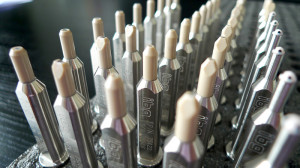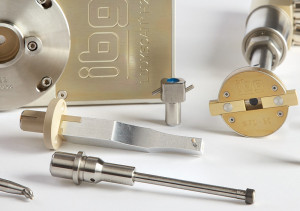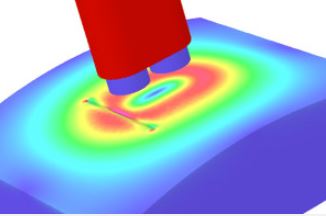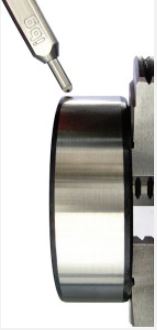
ibg has perfected the science behind manufacturing probes from three decades of accumulated theoretical knowledge and experience. A specific team at ibg is involved in the concept, design, and testing of sensors for structure and crack detection to develop the right sensor for each of your desired applications. If you need assistance with determining which probe is right for your eddy current application, contact a Berg sales engineer at 847-577-3980 or email info@bergeng.com.
Probes for Crack and Grinder Burn Detection: The Right Solution for Each ApplicationManufacturing crack detection probes is a highly specialized field that involves microscopic small parts and fine wires that all need to be assembled to build a functioning sensor. ibg has many standard probe models, and these have a lower cost and faster ship time compared to special orders. ibg designs probes for specialized applications and test systems, e.g. for testing rough surfaces, teeth and spline areas, in addition to inaccessible test locations like the inner diameter of hubs. ibg can design probes in virtually any layout for varying testing applications and will work with you in developing them. Aside from the electro-technical optimization, they pay close attention to ease of installation and high mechanical precision. Future orders of tailor-made probes will be faster since ibg will already have the specifications developed. Differential Probes for Crack and Grinder Burn DetectionA differential principle reduces the very large receiver signal almost to zero by use of two compensating counter rotating receiver windings. This enables very high amplification of very small signals without overloading the input of the test instrument. In addition, a differential probe is much more tolerant for distance fluctuations between the probe and the test part as well as for the difference in the hardness patterns than absolute probes that are currently available. ibg ensures a high level of precision in their probe manufacturing process to enable strong amplifications. The current ibg instruments employ extremely low noise signal processing, earliest possible digitalization and smart signal processing to achieve optimal evaluation at high amplifications.ibg combines very high flaw signal amplification combined with very low noise signal processing to allow inspection distances to be optimized between test probes and test surface without losing test sensitivity. This production breakthrough allows ibg's crack detection probes the freedom to use 0.7 mm lift off from the test surface compared to other manufacturers who are limited to a 0.2-0.3 mm probe distance. Based on a feasibility study, ibg and Berg Engineering will be able to recommend the right probe for your application. Several probe types are available such as the standard probe, micro probe, X-probe, spherical X-probe, T-probe, multi-differential (four core) probe or phi-probe with trace width from 0.5 to 13 mm. |

ibg standard probes for crack and grinder burn detection 
Special probes for the use in automatic systems and in ibg rotating heads 
Simulation of how an ibg differential probe works while scanning a 3 mm long artificial crack 
The new release ibg spherical-X probe detecting cracks and grinder burn on a bearing ring |